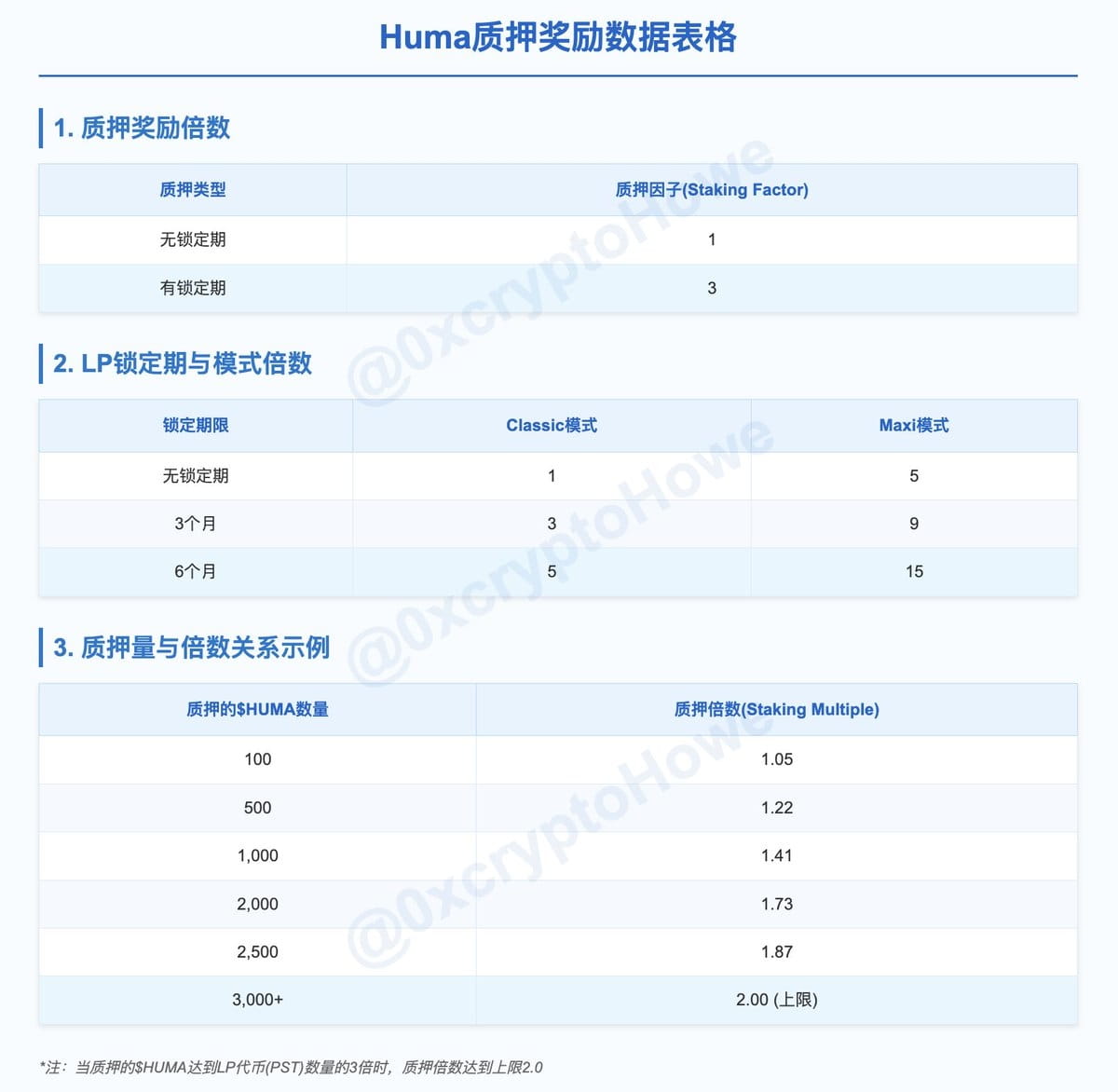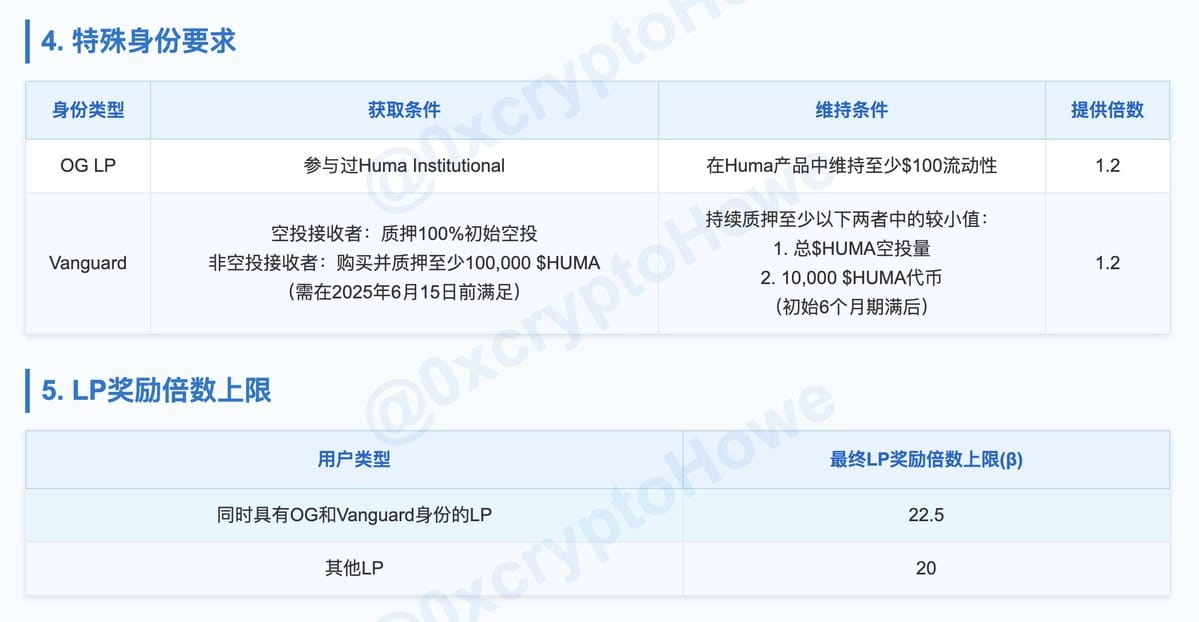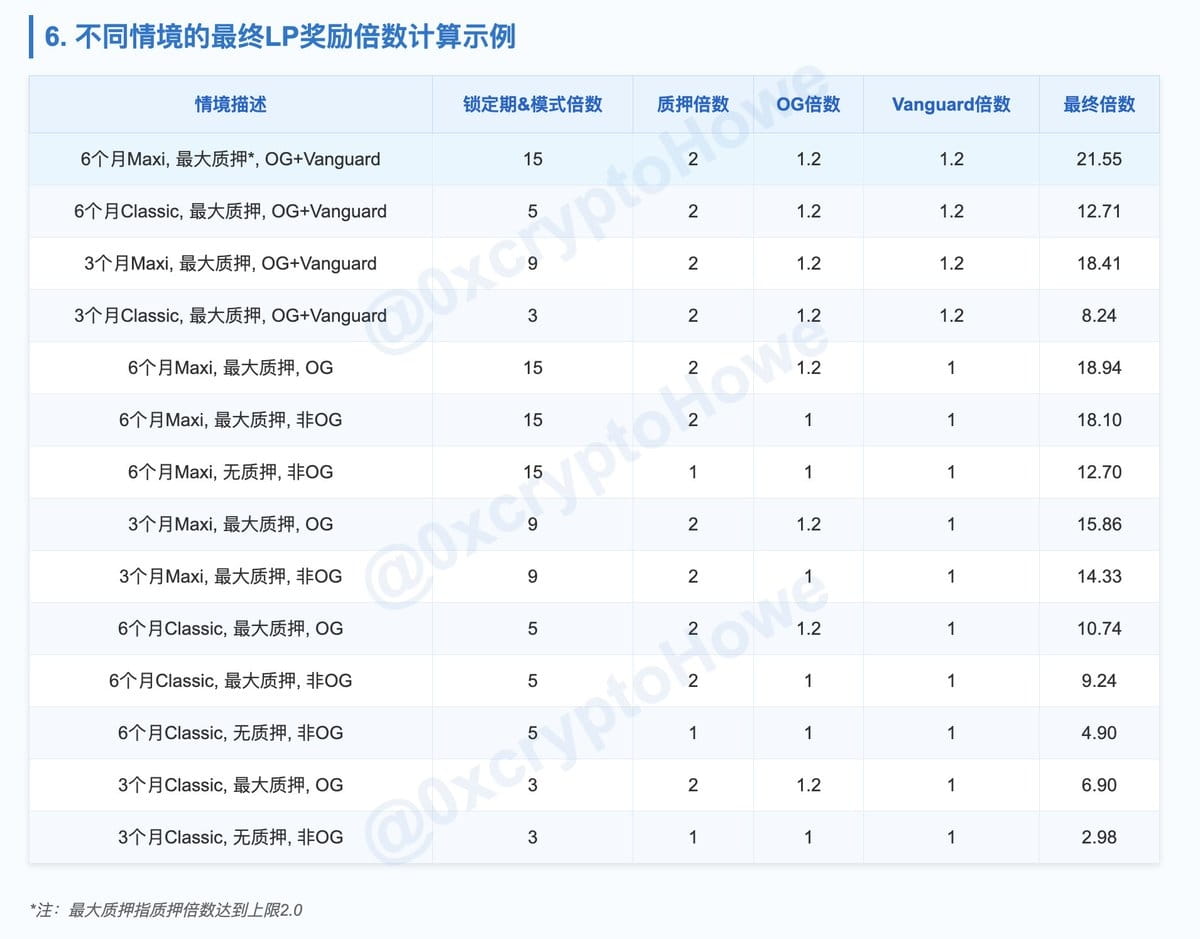Following the priority staking benefits for stakers from the past few days, the Huma Staking proposal has now been released.
I was lazy and didn't write it immediately, so today I'll quickly go over the core data changes of the proposal and the relevant participation strategies for different roles.
————
➣ Relevant core data changes in the proposal.
This proposal mainly introduces incentives and related calculation formulas for $Huma stakers as well as OG identity and Vanguard identity.
From the design, we can see that the team has achieved a reasonable balance between long-term incentives and short-term benefits, avoiding excessive abnormal income for long-termists while reasonably providing good incentives to some short-term participants.
The relevant data changes are shown in the figure below.

It should be noted that the biggest beneficiaries of this proposal are those who hold both OG and Vanguard identities.
Among them, OG identity needs to participate in Huma 1.0 staking to obtain, while Huma gained a lot of popularity in Huma 2.0, thus the number of OG identity holders is relatively small (additional incentive for early supporters).
This will result in our LP reward ceiling being lower than that of dual identity holders, thus unable to maximize returns.

Based on this, we can obtain the relevant LP reward multiples for different identities and strategies. It should be noted that to achieve the maximum staking multiplier (2 times), it is necessary to stake 3 times or more LP tokens (PST) worth of $Huma.
Assuming the user has 1,000 PST, they need to stake at least 6,000 Huma to reach the maximum multiplier.

————
➣ Relevant participation strategies for different roles.
1. Long-termists' Multi-Account Strategy
Core Idea: Maximizing Identity Allocation + Layered Fund Management
Main Account Strategy:
- Obtain and maintain dual identity of OG LP and Vanguard
- Use 6-month Maxi mode, maximum staking ratio
- For governance voting and long-term holding
Auxiliary Account Strategy:
- Risk Diversification Account: Use a 3-month lock-in period to facilitate rotation and manage fund liquidity
- Test Account: Small participation in various new strategies and models, serving as a risk testing ground for the main account
- Special Staking Account: Pure staking account to maximize staking rewards (using lock-in period options)
Multi-Account Combination Advantages:
- Fund Layering: Main account maintains optimal strategy to obtain the highest multiplier, auxiliary accounts rotate unlocking to provide liquidity
- Risk Isolation: Separate important assets from experimental strategies
- Optimize Early Access Quota: Each account can obtain early access quotas based on staking amounts, overall increasing deployable funds
- Staggered Lock-in Periods: Lock-in periods of different accounts are staggered to ensure there are always funds available to flow
2. Low-Risk Investors' Multi-Account Strategy
Core Idea: Risk Diversification + Time Mismatching + Minimizing Lock-in
Main Account Strategy:
- Moderate staking to obtain basic rights
- Maintain minimum requirement for OG LP ($100 liquidity)
- Use Classic mode or no lock-in period option
Auxiliary Account Strategy:
- Rotating Lock-in Accounts: Multiple small accounts take turns locking in, each account only locking a small amount of funds
- Qualification Maintenance Account: Only maintain the minimum requirement to hold identity
- Flexible Funds Account: Completely no lock-in, can exit at any time
Multi-Account Combination Advantages:
- Reduce the lock-in ratio for each account: Lower risk exposure for single accounts
- Create custom liquidity ladders: Set different lock-in periods for different accounts to form regular 'unlocked liquidity'
- Maintain market sensitivity: Always have enough funds to respond to market changes
3. Yield Farmers' Multi-Account Strategy
Core Idea: Conditional Arbitrage + Scale Effect
Main Strategy Combination:
- Airdrop Optimization Account: If multiple addresses receive an airdrop, each account stakes 100% of the airdrop to obtain Vanguard identity
- Early Access Maximization Account: Multiple accounts stake the minimum effective amount separately to gain multiple early access privileges
- Activity Participation Account: Specifically used for participating in temporary high-yield marketing incentive activities
- Zero Lock-in Account: No lock-in period Maxi mode, can exit at any time
Multi-Account Yield Techniques:
- Tiered Staking: Different accounts use different staking amounts to test the best input-output ratio
- Rapid Fund Rotation: Once an activity ends, immediately transfer funds to the next opportunity
- Identify Temporary High-Yield Windows: Use multiple accounts to monitor yield rate changes in different time windows
Multi-Account Combination Advantages:
- Qualification Doubling: Multiple addresses obtain multiple early access rights, increasing actual deployable funds
- Reduce Single Point Risk: Only a portion of funds is affected when issues arise
- Flexibly Respond to Rule Changes: Quickly adjust strategies when protocol rules change



